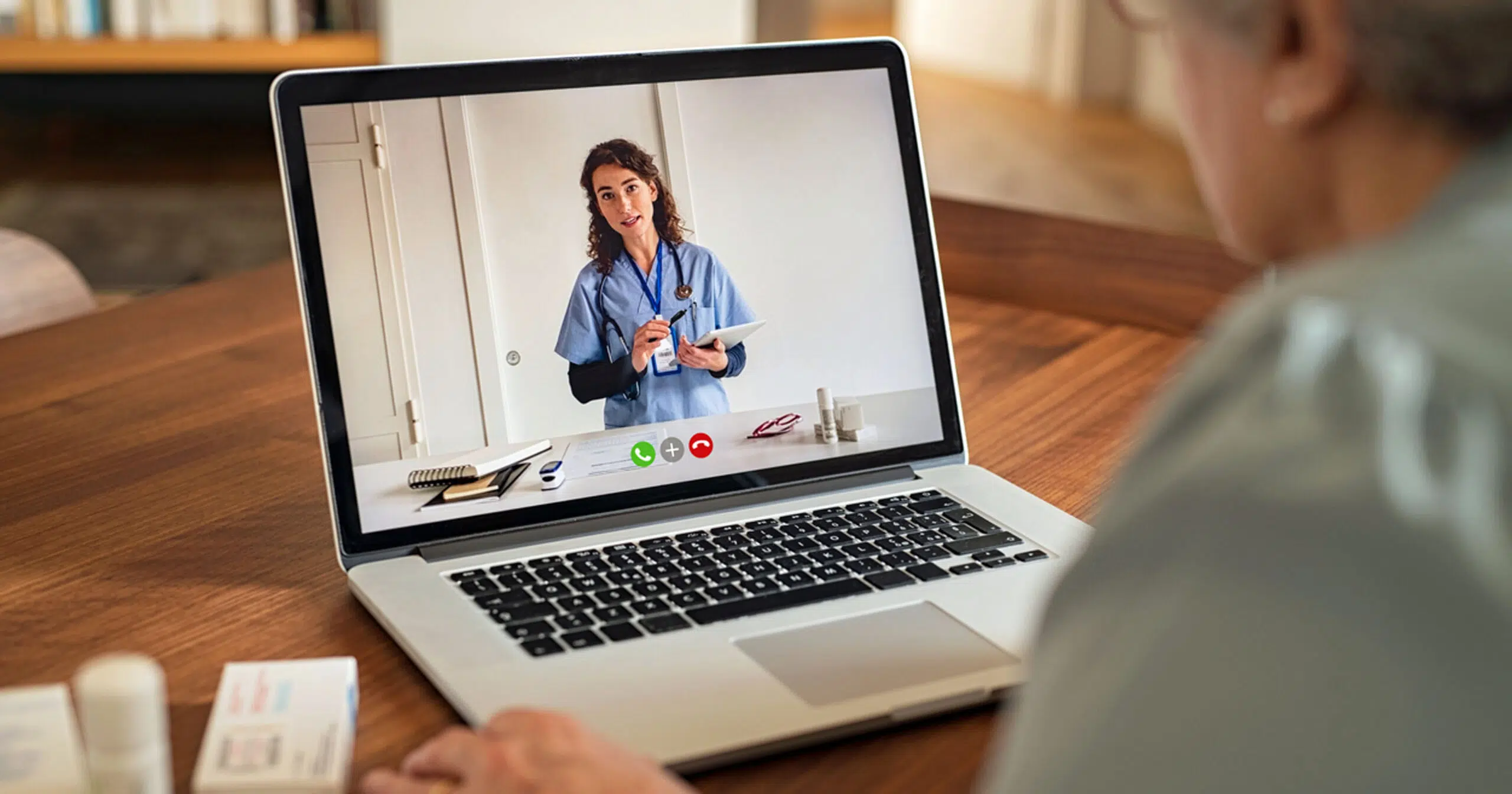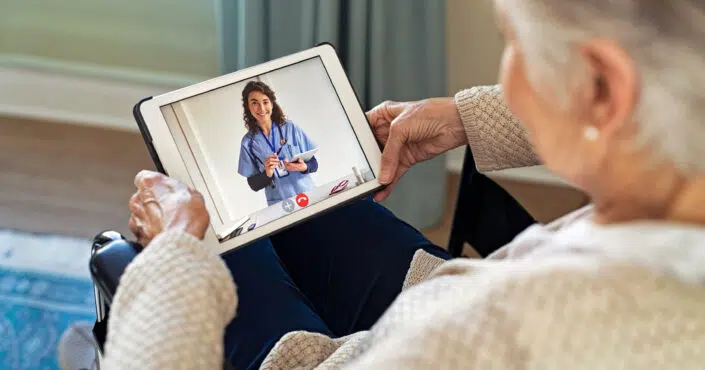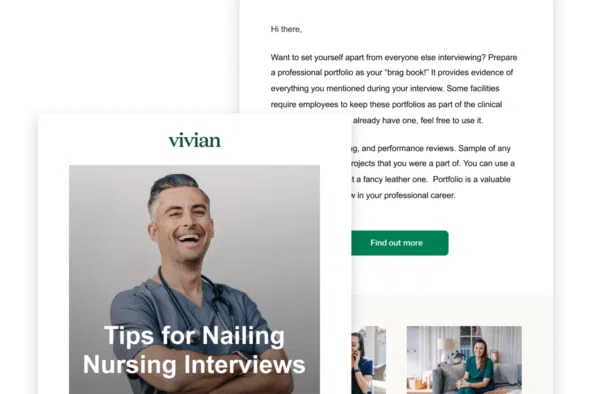The traditional path of bedside nursing is evolving, with new opportunities arising for remote nursing jobs. Driven by a desire for improved work-life balance and a fresh outlook on patient care, many nurses are exploring the flexibility and innovation of remote work. Let’s delve into the dynamics of remote nursing jobs, focusing on some common barriers and opportunities you may encounter as a nurse looking to enter this rapidly growing field.
Rise of Remote Nursing Jobs
Over the past decade, remote work has gone from an abstract thought to a household term. In the past, working from home was a special arrangement to accommodate individual needs like family or health and was limited to more traditional office roles within various professions such as administration positions. However, nursing has been categorically a hands-on profession providing patient care in healthcare settings, making remote work nearly impossible.
COVID-19 introduced millions around the world to working from home, with companies quickly adapting their policies to keep staff and communities safe. Nurses and healthcare professionals were no exception to this trend. Despite initial barriers such as concerns about patient safety and regulatory compliance, remote nursing has emerged as a vital part of modern healthcare delivery. Game-changing trends in healthcare are driving advancements in technology usage, simplifying accessibility for both patients and providers.
The rapid evolution of telemedicine and digital healthcare platforms has paved the way for remote nursing opportunities. Nurses can now provide essential care, support and consultation to patients from virtually anywhere, leveraging video conferencing, remote monitoring devices and secure communication channels.
Changes in Telehealth

Telehealth has seen rapid growth in the United States since the pandemic. McKinsey’s research indicates that between February 2020 and April 2020, telehealth experienced an astonishing 78-fold surge in growth. While this growth has stabilized, telehealth usage remains significantly elevated compared to pre-pandemic levels.
According to a study by the Organisation for Economic Co-operation and Development (OECD), the U.S. was among eight countries with strict telemedicine regulations before the pandemic. In an effort to ensure the safety of care providers and communities, our nation rapidly shifted healthcare services to remote care wherever feasible. Telemedicine policies were quickly modified to enable greater patient access and permit various healthcare workers to conduct telehealth consultations.
Motivating Factors of Remote Nursing Jobs
The surge in virtual nursing has been crucial in addressing the nursing shortage. The Online Journal of Issues in Nursing indicated some of the primary facilitators of remote nursing jobs to be:
- Organizational Support: Remote nurses want to access technological support and have company-issued tools such as laptops, phones, monitors, docking stations, etc.
- Flexibility: Remote work has given nurses an increased work-life balance due to no commute, a more flexible schedule and the ability to attend more meetings because there’s no transportation barrier.
- Financial Gain: Nurses save money working from home by not commuting, reducing gas, toll and parking expenses. A travel virtual care nurse makes 18% more than the U.S. nursing average and a staff virtual care nurse in New York can make up to $74 an hour.
Technological advancements like telehealth platforms and electronic health records have streamlined healthcare delivery and made working from home a possibility. These technologies optimize care, drive efficiency and increase the number of remote nursing jobs.
Barriers to Remote Nursing Jobs
With many benefits to remote RN jobs, you mustn’t forget to consider the possible barriers. The following challenges may become a barrier for some nurses interested in remote jobs.
Technology and Connectivity Challenges
Limited internet access may delay care, while cybersecurity threats jeopardize patient privacy. Navigating complex technology can impede efficient healthcare delivery. Resolving these challenges requires addressing infrastructure gaps, strengthening cybersecurity measures, providing comprehensive training to healthcare professionals and educating patients.
Professional Isolation Worries
The Online Journal of Issues in Nursing identifies disconnection from the organization as a potentially significant obstacle to remote nursing. While transitioning to virtual roles has enhanced work-life balance and patient accessibility, lacking in-person communication can result in diminished team cohesion and professional isolation. Relying solely on virtual meetings like Zoom can hinder relationship-building among colleagues, potentially complicating decision-making processes due to the absence of these vital connections.
Concerns About Patient Care and Rapport
Nursing is a people profession. Many of us become nurses with the traditional role of providing face-to-face care in mind. Nurses and patients still feel this way and may put up psychological blocks to new technology, fearing the change that may come with virtual care.
Regulatory and Licensure Challenges
The OECD has concerns about the temporary pandemic-driven policies surrounding telemedicine. These policies are regularly reassessed and could change suddenly, raising questions about how regulating authorities will govern virtual care in the future.
Nursing licenses can bring roadblocks for nurses wanting to provide virtual care in different states, primarily due to variations and complexities of state regulations. Each state continues to maintain its own rules and standards for nursing practice, creating an array of regulations that remote nurses must navigate.
Overcoming Barriers and Enhancing Advancements

Despite some apprehension towards virtual care from patients and care providers, this delivery model is the future of healthcare. Let’s address how to explore this change.
Technology Solutions
Having proper equipment and tech support is absolutely necessary to facilitate virtual nursing. Healthcare companies can take the lead by:
- Providing on-demand tech help during working hours
- Supplying up-to-date equipment, such as computers, microphones, cameras, remote monitoring devices, etc.
- Implementing robust cyber security measures
- Offering adequate on-the-job tech training to familiarize employees with the software
- Developing user-friendly mobile apps tailored for remote nursing tasks to streamline workflow and efficiency, such as scheduling, documentation and communication tasks
Healthcare companies can empower remote nurses to deliver high-quality care by investing in and leveraging these technology solutions.
Mitigating Professional Isolation
Virtual networking is a great way to help if you feel professionally isolated in your remote nursing role. Consider scheduling a virtual coffee break with a colleague over Zoom or connecting with fellow remote nurses on LinkedIn to provide mutual professional support.
In response to the challenges of remote work, some companies have adopted strategies to enhance team cohesion, such as organizing in-person retreats, conferences or meetings. These gatherings provide valuable opportunities for team members to connect face-to-face, strengthen bonds and foster a sense of camaraderie. By incorporating in-person events into their remote work structure, companies aim to create a more balanced approach that combines the flexibility of remote work with the benefits of in-person interaction.
Improving Patient-Nurse Rapport Remotely
Strengthening the bond between patients and nurses in remote care involves mastering trust and communication skills. The patient-provider relationship may feel trickier to maintain online, but with a little effort, it’s doable. Utilize the same skills as when you provide in-person care, such as:
- Actively listening
- Clearly communicating
- Expressing empathy and understanding
- Using motivational interview tactics
- Maintaining eye contact
- Tailoring interactions to individual preferences
Talk to your patients as if you were in person, starting with a friendly opening and small talk before jumping right into health questions. These techniques strengthen the patient-nurse relationship in remote settings.
Strategies for Addressing Regulatory Challenges
The OECD advocates for permanent virtual healthcare delivery policies and acknowledges that the U.S. is taking measures to assess and develop frameworks surrounding telemedicine services. Policy around telehealth and virtual healthcare must become permanent to shape the continued growth positively.
On a federal level, more cohesion within states is necessary for nurses to deliver care despite geographical location. Licensure compacts enable nurses to practice more easily across state lines while addressing workforce shortages and improving access to care. By advocating for these initiatives, stakeholders can promote efficient healthcare delivery, enhance patient access to quality services and support the continued advancement of telehealth and remote nursing practices.
Impact of Remote Nursing on Healthcare Delivery
A review in The Journal of Frontiers in Public Health suggests that the move to digital health improved patient outcomes, optimized resources and reduced healthcare costs. Nurses can provide care in a new and exciting way, leading to a more comfortable work environment, increased flexibility and improved mental health. Due to the advantages of virtual care, nurse retention is likely to become more manageable.
The International Journal of Environmental Research and Public Health found that patients were highly satisfied with the convenience, accessibility and quality of remotely-provided care. Remote healthcare interventions correlate with improved health outcomes, including better management of chronic conditions, reduced hospital readmissions and increased patient engagement in their care. These findings underscore the effectiveness of remote healthcare in enhancing patient experiences and outcomes, demonstrating its potential to impact healthcare delivery positively.
The Future of Remote Nursing

The pandemic was hard on everyone — emotionally, physically and financially — but the move to virtual and remote nursing has been a positive aspect accelerated thanks to COVID. Remote nursing and telemedicine are the way of the future. As the barriers to these services are acknowledged, they will continue to improve over time. There’s great potential for different technologies like mixed reality and virtual reality to work alongside remote nursing to help enhance virtual assessments even further.
Remote monitoring and wearable devices also have the potential to help nurses assess patients in real-time to understand the whole picture better and deliver accurate care from a distance based on the patient’s vital signs, symptoms and medication adherence. This continuous monitoring empowers nurses to intervene promptly, prevent complications and personalize care plans based on individual patient needs.
Exciting times are ahead as remote nursing revolutionizes the healthcare environment. As nurses, we have the choice to embrace or resist this transformative change. But why resist when the benefits for patients, healthcare providers and the entire healthcare system are so immense?
Remote nursing offers unprecedented opportunities to improve patient care, enhance access to healthcare services and streamline workflows. If you’ve had any doubts or questions about diving into remote nursing, now’s the time to consider this incredible shift toward a brighter future in healthcare.
Explore Vivian’s job marketplace now to discover the amazing job opportunities waiting for you.









